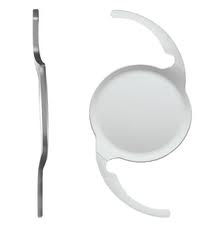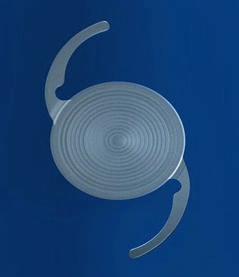Cataract Surgery
Cataracts are one of the leading causes of loss in vision in adults aged 60 and older and by the age of 70 almost 80% the human population have cataracts. Vision loss due to cataracts is highly treatable thanks to advances in both cataract surgery and intraocular lens full restoration of vision is a reality. Most patients are back to normal activities of life in a couple of days.
The human eye has a lens in its center that helps focus light and images. When we are born the lens is perfectly clear and with age the lens becomes harder and less clear. Dim or blurry vision, halo appearing around lights, colors appearing faded and sensitivity to bright lights can all be symptoms of cataract.
Cataract is detected in the eye and assessed with equipment called Slit Lamp. Cataract Surgery is performed as a Day Care Procedure, where the eye's natural lens is replaced with an artificial lens called an intraocular lens (IOL).
Facts about Cataracts
- It is one of the most safest and most common surgries performed.
- The procedure takes about 15-30 mins and is relatively painless.
When is Cataract Surgery Done?
Cataract should be removed as soon as it begins to affect daily activities. With any of the above mentioned symptoms setting in, it is the right time to go for Cataract removal. DO NOT WAIT FOR THE CATARACT TO GET MATURE as unnecessary delay can lead to avoidable complications and more difficult surgery. Cataract surgery can be undertaken successfully in any season. Summer or rainy season have absolutely no effect on the outcome of the cataract surgery.
Phacoemulsification with foldable IOL
In phacoemulsification, ultrasound power is used to break the hard cataract into minute pieces, which are then sucked out through a small 1.5-2.8mm incision. A foldable lens (IOL) of the required power is then implanted. The soft construction allows the lens implant to be folded for insertion through a 1.5 to 2.8mm micro incision. Once in place, the lens unfolds to its regular size of 6 mm.
Treatment Options for Cataract
Microincision Cataract Surgery (PHACOEMULSIFICATION)
- Requires a very small incision of 1.5 - 2.8mm
- Cataract Extraction with Phacoemulsification is followed by foldable lens implantation
- Short day care procedure
- Stitchless, bloodless, painless surgery
- Chances of infection are very low
- Minimum post surgery precautions
- Quicker healing and recovery
With phacoemulsification and implantation of foldable Intra Ocular Lens (IOL), treatment of cataract has become very simple for the patient. This is backed up sophisticated state of art Ophthalmic equipment and expertise making the procedure safe and accurate leading to rapid recovery of vision. Thus phacoemulsification with modern foldable lens implant is the most recommended treatment for cataract.





